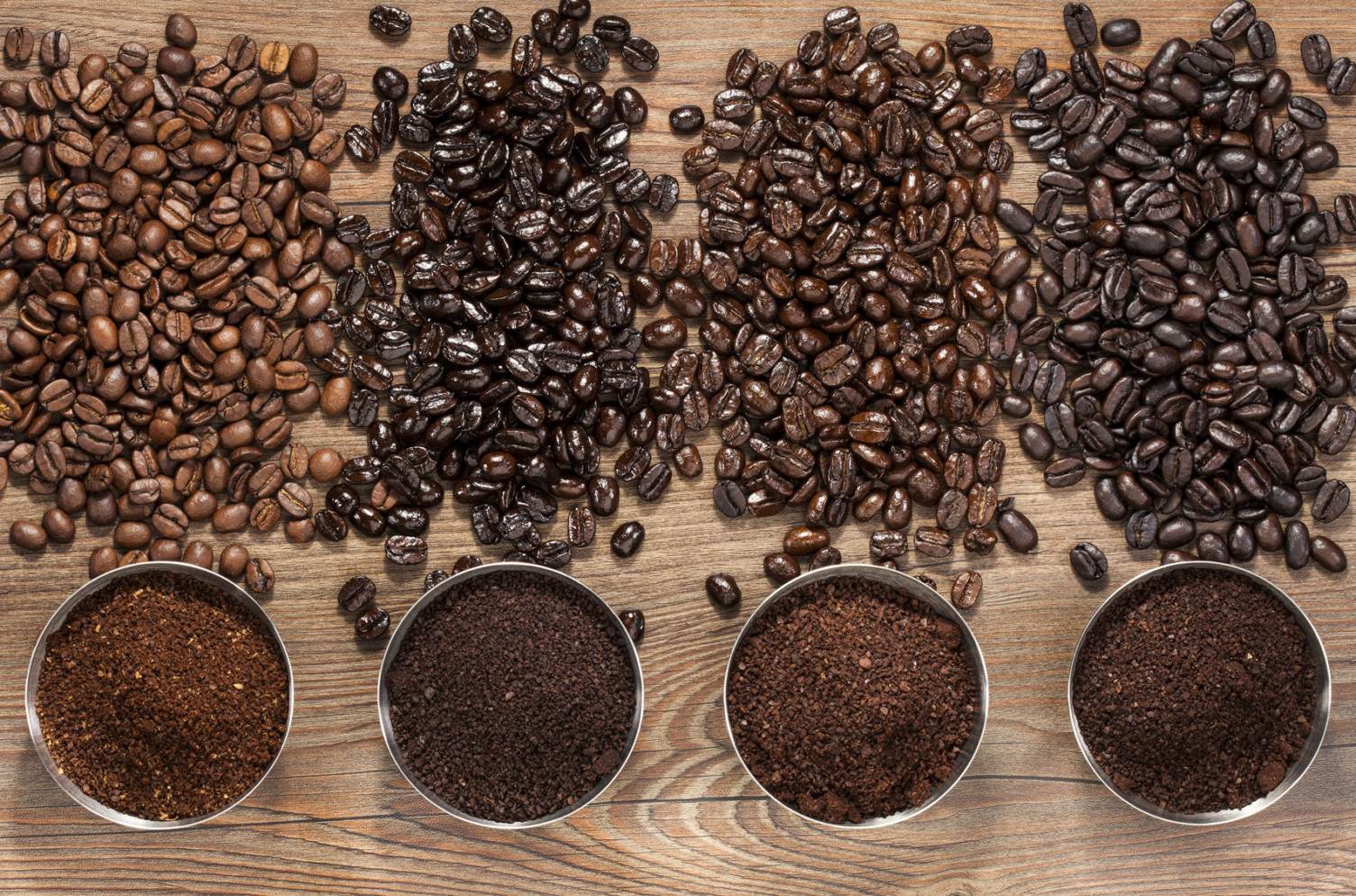
When I created Bulletproof Coffee, I took painstaking care to get the best coffee beans available, and to produce them with a special Bulletproof method that eliminates mold and mycotoxins. I wanted a coffee that balanced optimal performance enhancement with satisfying flavor.
I quickly learned that coffee is more complex than it seems. In addition to mold contamination, a good cup of coffee depends on plant species, growing altitude, processing style, roast darkness, flavor profile, and about a dozen other variables.
The Original Bulletproof coffee beans are a lighter roast with a bright flavor profile. Today, I’m excited to offer Bulletproof dark roast coffee in two new flavors:
- The Mentalist – Dark cocoa and vanilla top notes open to a full-bodied coffee with cherry sweetness and finishing notes of almond and caramel
- French Kick – Smooth and sweet dark roast with smoky baking chocolate notes, medium body, and a clean finish
For those of you who aren’t coffee snobs ;):
- The Original is medium
- The Mentalist is medium-dark
- French Kick is full dark
All three roasts use 100% Arabica beans, grown at a high-altitude estate in Colombia for roasting December to June, or a high-altitude estate in Guatemala for roasting June to December.
Are there benefits to dark roast coffee?
There isn’t much of a difference. The main thing is your taste preference.
Conventially, darker roast coffees are lower in mycotoxins…but all Bulletproof beans are already third-party tested down to zero parts per billion mycotoxins, so that’s a non-issue here.
Darker roasts are lower in acrylamide, a carcinogenic toxin (acrylamide is why coffee in California comes with a cancer warning). Acrylamide content peaks earlier in the roasting process and decreases from there [1]. Light roasts have the highest acrylamide content – not counting instant coffee, which is the worst offender by far.
But either way, it doesn’t really matter how much acrylamide is in there. The link between acrylamide and cancer happens when people are exposed to acrylamide levels 100,000 times larger than you’ll get in even the most acrylamide-laden coffee. Plus, coffee consumption correlates with a lower risk of cancer [2], so it seems the good compounds (polyphenols and oils like kahweol and cafestol) outweigh the acrylamide.
Darker coffee has lower caffeine content. It also has fewer polyphenols, so you may want to drink a couple extra ounces each morning to make up for the drop.
Basically, the main difference between light and dark roasts comes down to taste. If you’ve been craving a stronger, bolder flavor to your morning cup, these dark roasts will satisfy.
What about coffee acidity?
One factor that’s been in the news lately is coffee acidity. Coffee contains 5 major naturally occurring acids, and some coffee companies say they can cause stomachaches you can avoid by buying their “low-acid” coffees.
Darker roasts, including the two new Bulletproof dark roasts, are lower in acid content. But I don’t think that really matters.
There isn’t much to the low-acid coffee argument, or to low-acid diets in general. In fact, for most people, the acids in coffee are either beneficial or irrelevant. Here’s a quick look at how you process the 5 major acids in coffee and how each one affects your body.
[Tweet “Craving a stronger, bolder flavor to your morning cup? These dark roasts will satisfy”]
Your food’s acidity doesn’t affect your blood’s acidity
You measure acidity with pH, a scale that goes from 0-14. Lower numbers are more acidic, higher numbers are more alkaline, and 7 is neutral. As a reference point:
- Your stomach acid has a pH of 1
- Distilled water has a neutral pH of 7
- Dish soap has a pH of 12
The average cup of black coffee clocks in at a pH of about 5, making it mildly acidic. Many promoters of an acid/alkaline balancing diet suggest quitting coffee because it will make your body too acidic and pull minerals from your bones. Clinical trials have repeatedly shown that that doesn’t happen [3,4,5]. It’s just the opposite, in fact: meat and other acidic foods promote bone health [6,7]. So as far as acid/alkaline balance goes, low-acid coffee doesn’t benefit you – and acid/alkaline diets don’t have much science to back them up.
Acids in coffee are actually good
The main acids in coffee are chlorogenic, malic, citric, acetic, and caffeic. They do a variety of good things for you:
- Chlorogenic acid is a powerful antioxidant and anti-inflammatory. It’s very bioavailable, too [8,9].
- Chlorogenic acid may also increase insulin sensitivity [10].
- Chlorogenic acid may decrease sensitivity to common plant allergies [11].
- Malic acid and citric acid are anti-inflammatory as well. Both acids are cardioprotective for rats, although there aren’t any studies on whether they decrease risk of heart attacks in humans [12].
- Acetic acid is the main component of vinegar. In high doses it can irritate your digestive tract, but there isn’t nearly enough of it in coffee to do that, unless you have an unusually sensitive GI tract because of something like ulcerative colitis, Crohn’s Disease, or IBS.
- Caffeic acid is another strong antioxidant [13].
When can low-acid coffee be good for you?
Coffee acids can be irritating for certain people. As I said, if you have an inflamed GI tract from Crohn’s or irritable bowel syndrome (IBS), more acidic coffee may give you a stomachache.
In one study, researchers injected rabbits and guinea pigs with high doses of chlorogenic acid from green coffee extract and found that the animals became allergic to it [14]. Many low-acid coffee sellers cite this study, but a later review found that sensitization only happens when you inject chlorogenic acid [13]. Don’t mainline syringes of coffee extract and you should be fine.
Unless you have a chlorogenic acid allergy or a bowel disease, coffee acids are beneficial at best and a non-issue at worst. If you are sensitive, darker roasts may be better for you, since they have lower acid content. Or you can just add a tiny pinch of potassium bicarbonate to your coffee. It will convert the acids to potassium citrate and potassium malate, which will probably eliminate any issues you have, although it may also change the coffee’s flavor. Otherwise, keep enjoying your coffee and don’t worry about how acidic it is. Thanks for reading and subscribe below for more great content!
[expand title=”Click to read the complete list of references.” swaptitle=”Click to hide references.”]
- http://www.ncbi.nlm.nih.gov/pubmed/24325083
- http://www.ncbi.nlm.nih.gov/pubmed/26656410
- http://onlinelibrary.wiley.com/doi/10.1359/jbmr.090515/full
- http://www.ncbi.nlm.nih.gov/pubmed/21529374
- http://journals.cambridge.org/action/displayAbstract;jsessionid=4BF7E0F94C71476B8E4403A2A83E1E90.journals?aid=9016507&fileId=S0007114513000962
- http://www.ncbi.nlm.nih.gov/pubmed/19754972
- http://www.ncbi.nlm.nih.gov/pubmed/16373952
- http://jn.nutrition.org/content/138/12/2309.full
- http://jn.nutrition.org/content/131/1/66.short
- http://care.diabetesjournals.org/content/32/6/1023.full.pdf+html
- http://www.ncbi.nlm.nih.gov/pubmed/21804227
- http://www.hindawi.com/journals/ecam/2013/820695/
- http://pubs.acs.org/doi/abs/10.1021/jf970055t
- http://www.jacionline.org/article/0021-8707(64)90023-1/abstract









